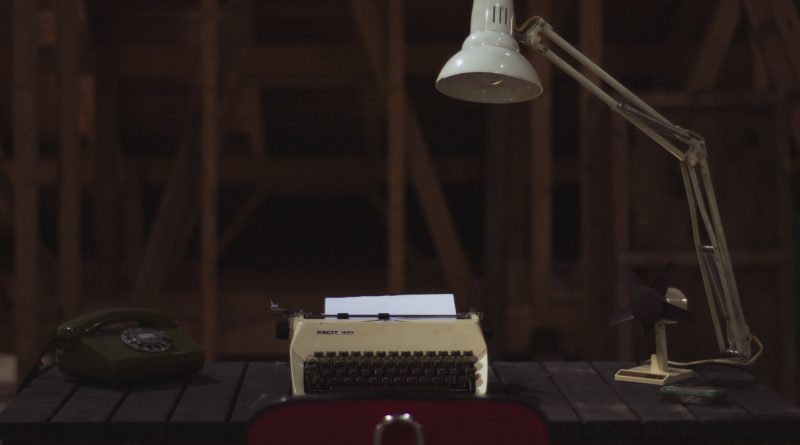How to Write a Book if You’re a Notoriously Noncommittal Person
Oh, hey there fellow person. I see you clicked this link or maybe some hilarious friend sent you this. I’m guessing it’s because you’re notoriously noncommittal and have always said you have wanted to write a book, but you have never written a book because you’re notoriously noncommittal.
Guess what. There’s hope for people like you and I. I came up with an equation that is guaranteed to work. Take a look at it here:
Plan (0.4) + Time (0.4) + Whiskey (0.1) + Music (0.1) = Book (1.0)***
***please note that “book” =/= “great book”
I can honestly say that if you follow my equation to a tee, you will have your first draft done within a year. Probably less. Hopefully less. Let’s just assume less.
Woah! What a simple equation! Too simple… Well, let me break down each part of the equation. Because that’s how you write a blog post. In parts. Speaking of breaking it down into parts…
Sub Title: Part One – The Plan aka Jacob’s Book Blueprint
This part was the easiest part because all you do is break the parts down into parts. Well, all of the parts are the easiest part. Except for the time part. That part was actually a slightly difficult part. Not because it was actually difficult, but because I find consistency in general difficult. If you’re good at consistency, that part will also be an easy part.
 When I was first starting, I read countless blog posts, tips, suggestions, and books, but none of them really seemed to work for me. It was just a bunch of professional “how to write a book” writers who had never written a real “non-how to write book” book. So I came up with my own thing, consisting of equal parts laziness and creativity.
When I was first starting, I read countless blog posts, tips, suggestions, and books, but none of them really seemed to work for me. It was just a bunch of professional “how to write a book” writers who had never written a real “non-how to write book” book. So I came up with my own thing, consisting of equal parts laziness and creativity.
I can’t do a whole project. I can’t even do parts of a whole project. What I can do, is I can do parts of the parts of the whole. Parts of the parts of the whole are simple, easy, not even challenging. Writing 75,000 words with a consistent theme and story arch, that’s challenging. Writing a 100 word passage on what a guy or girl is doing, now that is easy. This paragraph is 100 words. AND GUESS WHAT! All a book consists of are 100 word passages about a guy or girl doing something, strung together 750 times.
Sub sub title: Breaking it Down (with Math in BOLD)
Why are we using math to write a book? Because math makes writing a book seem simpler. Math makes everything easier. I’ll show you how, with math.
The first thing you want to decide is how many chapters you want. I chose 15. Why 15? Because 15 is the easiest number I could come up with. A story has a beginning, middle, and end. That is a total of 3 parts if you weren’t counting.
But why 15? Here’s why, explained by math: 4x3=12. 12 = a short ass book. 6x3=18. Ain’t nobody got time for 18 chapters. 5x3=15. 15 = within reach. 15 = simple. 5, 5, and 5. Easy.
Now that we have selected 15 as our magic number, how do we decide how many words to write for each chapter? Simple. The average chapter of a book worth reading is between 4000 and 6000 words, depending on genre. Don’t believe me? You obviously haven’t done the research required to procrastinate enough to qualify as someone who should be reading this article. Well. 4000 and 6000… if only there was a simple number that was an average… wait a minute. 5…thousand… 5000! That seems like a good number for simplicity sake.
In case you’re bad with math, here is our blue print: A 3 Part Book, 5 chapters/part, 5000 words/chapter
Woah. Wait a second. 5000. That’s a large number of words. I can’t tackle that. The largest amount of words I wrote was 2,000. And it was really only 1800 with increased margins, 1.5 spacing, and 13 point font. How will I ever conquer 5000 real words?
Easy. Make it smaller, with math. Let’s say each chapter consists of 2 scenes or major events. Why 2? Because it’s easy. That whittles it down to 2,500 words per scene. That we can handle.
Now that we have our book blueprint, the fun part happens. We can come up with an idea for a story. Wait, what? You already had an idea for your story and that’s why you’re reading this post to begin with? Cool. There we go. Wait? You don’t have a story? Then why the hell do you want to write a book?
Sub sub title: Using Jacob’s Book Blueprint (In case you didn’t want to read the above)
Now that we have our story and our blueprint, all we need to do is combine them. We have three parts: beginning, middle, and end. Put a ***major event*** in chapter 5, chapter 10, and chapter 15. Now you have yourself a simple story.
Next, you fill in the blanks. This is how you get a full story. I’ll give you a little taste for how I set mine up. I wrote this Part 1 example in about 5 minutes. Because I realized I needed an example. (I also think I may pursue this story. Working title will be “Dave and the Magic Rubber”).
PART ONE
Chapter 1 – 0/5000
1.1 – Man meets the love of his life – 0/2500
1.2 – Man tells his friend about her – 0/2500
Chapter 2. – 0/5000
2.1 – Man meets his love again – 0/2500
2.2 – He asks her on a date – 0/2500
Chapter 3 – 0/5000
3.1 – Date happens – 0/2500
3.2 – Date goes well and they go to his house – 0/2500
Chapter 4 – 0/5000
4.1 – The love making happens, but he under performs – 0/2500
4.2 – She is real mean, says even magic condoms wouldn’t help him – 0/2500
Chapter 5 – 0/5000
5.1 – Man is depressed, considers killing himself – 0/2500
5.2 – Man finds a magical condom – 0/2500 ***Major Event****
And that’s how you fill in a simple blueprint for your book. Easy as pie. I can write 2500 words about each one of those scenes with ease. Take all 10 of those 2500 word scenes and lay them end to end, and you’ve got yourself 1/3 of a book.
But Jacob! I don’t want to be so formulaic when it comes to my writing! I want to be creative! WELL, that’s why you haven’t written a book. Creativity needs structure if it wants to come to fruition. Creativity doesn’t get you a book. It gives you an idea. This blueprint gives you the structure you need to fill in with your creativity to finish your shitty first draft.
It’s like paint by number. But with words. It seems formulaic at first, but by the end, it looks pretty damn creative.
How about developing characters? DON’T DEVELOP THEM. That’s how you get stuck. Write your damn story first. Make your characters all one dimensional. I don’t care. Just don’t develop them in the first draft. Write your story. Make the twists and turns you want, kill off characters, do whatever you want.
On your second time through, edit your one dimensional characters so that they meet the requirements for your story to happen. If one of your characters gets betrayed by another, there you go, you know how to develop that character earlier on in the story. Plus people will marvel at how well you developed your characters to drive the story.
NOTE: I am not telling you how to write a great book. I am telling you how to finally get that damn book you have had in your head onto paper. After you’ve done the hard part of transferring it from brain to paper, only then can you turn that shitty first draft into a great book. And trust me, it is much easier my way than to just write a great book the first time through.
Sub Title: Part Two – Time
This is the hardest part for me. Because I’m not organized. Nor do I have habits (the good kind). Originally, I thought the whole writing thing would be the problem. I thought that I would have constant bouts of writers block. The blueprint takes care of that. I know where I’m taking the ship every 2500 words, I just need to write how I plan to get there.
 Time was the hardest part for me. Finding and using time. Well, mostly using time. I broke down my daily schedule one day, and I realized I had a ton of free time, but I would always struggle to sit down and use it on something productive. But eventually I learned how to.
Time was the hardest part for me. Finding and using time. Well, mostly using time. I broke down my daily schedule one day, and I realized I had a ton of free time, but I would always struggle to sit down and use it on something productive. But eventually I learned how to.
How did I do it? I scheduled time to write every day. I also set an extremely easy goal for myself. Additionally, I set a limit. You need both of these for a few reasons, trust me. My goal was to write 250 words a day. That would take me between 10 and 15 minutes depending on how motivated I was. I can spare 10 to 15 minutes. Majority of people can. So it was easy to accomplish my goal. I set my limit at 1000 words. I did this so I wouldn’t burn myself out. It also limited me from writing 3000 words one day and then feeling shitty the next day if I could only reach 250 words.
With my goal and limit, I was putting out between 250 and 1000 words a day. That means I would complete my first draft in three months to a year. That seems damn reasonable. I thought books were supposed to take the author years! Well, that’s wrong. It’s simple to write a first draft.
Sub Title: Part Three – Whiskey
I am a personal fan of Ernest Hemingway. No, not the real Ernest Hemingway. I haven’t read a single one of his books. I am a fan of the fake internet Ernest Hemingway who has the quote “Write drunk, and edit sober” attributed to him.
 Personally, I don’t start writing drunk. I start writing when I am sober. Eventually, as I get to about word number 10 or 11, I start to over think everything. When that happens, I just drink whiskey and keep going.
Personally, I don’t start writing drunk. I start writing when I am sober. Eventually, as I get to about word number 10 or 11, I start to over think everything. When that happens, I just drink whiskey and keep going.
Writing a book is more or less like living in a dystopian future. If you want to get through it, never turn back. Just keep moving forward. If you’re upset with what just happened, what you just did, or what you should do next, drink your worries away and keep moving forward. You can look back on your mistakes when you are done. Just don’t drink too much, or else you’ll be wasting your time writing complete dribble.
My personal go-to is whiskey with green tea. It sounds strange, but I’ve been to enough KTVs to have acquired the taste. Don’t knock it until you knock it back.
Sub Title: Part Four – Music
This is easy. Listen to some music that would fit your book if it were a movie. I’m talking instrumentals, soundtracks, etc. My go to for my book was Jazzhop, Vaporwave, and The Last Samurai soundtrack by Hanz Zimmface, because I have a real problem. You might want to pick something else for yourself.
FINISHED
That’s how you write a book. It’s very easy. People will tell you it’s tough because they’re going about it all wrong. It’s not tough. Just break it down and begin. Also! Keep in mind that you don’t have to go in order. You can hop around, writing the different scenes depending on your mood, all because you have a blue print to keep you in check so you don’t screw yourself for you second draft rewrite. You can thank me later.


